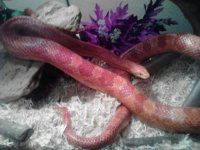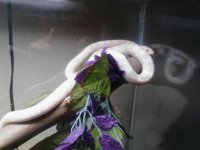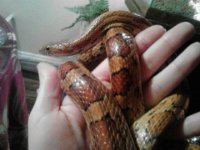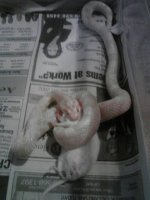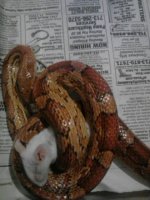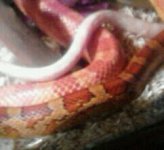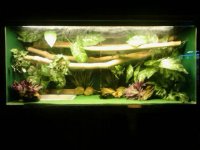Everyone has the morphs covered. I agree, if they are housed together, separate them ASAP. They are not communal creatures. Also looks like there may be a significant size difference between the snow and the other two? Which increases stress, risk of breeding complications (if it is female), and risk of cannibalism (again, it's a rare occurance, but it does happen, and significant size difference is a big trigger here).
Re: live plants, I have done the planted vivarium thing for a corn snake, and am currently using it for a couple rat snakes. It works well, if done right. Do your research. The Art of Keeping Snakes by Phillipe de Vosjoli is a good place to start.
The main things to keep in mind. Pick hardy plants that don't need to be watered much (i.e. pothos, philodendron, asparagus fern), and pick a substrate that's going to be very mild. Organic potting soil seems to work alright, but I've had great luck mixing eco earth (coconut coir) and a bit of 100% cypress mulch.

